Click here to print
Time to Start Fixing India’s Tattered Film Heritage
posted November 18, 2014
India’s cinematic heritage is vast, varied, and in dire need of better care — some film makers and supporters are taking the first steps to remedying a huge problem.
n
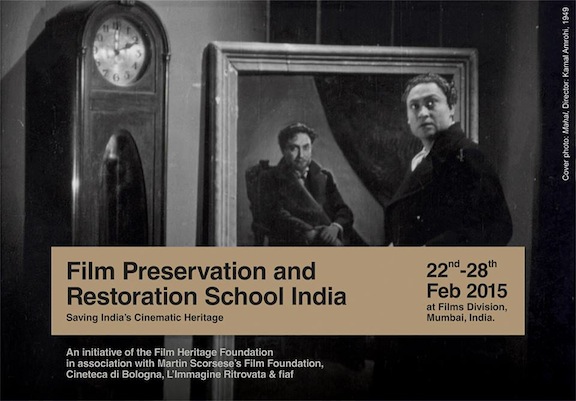
n
“In India, with its track record of neglect and complacency, most films are in very poor condition,” say the organizers of the country’s first full-fledged crash course in doing something about that, the Film Preservation and Restoration School, scheduled for 22-28 February 2015 in Mumbai.
Unfortunately, says Shivendra Singh Dungarpur, who earlier this year founded the Film Heritage Foundation in Mumbai, which is holding the event, the little film repair that is performed in India falls far short of full professional restoration. “The usual practice here,” he says in a notice on The Film Heritage Foundation‘s website, “is to do a digital scan and clean-up, while ignoring the repair and restoration of the original source material.”
Even archivists who would like to do the job properly are stymied, he says. “Most film laboratories have shut down their photochemical facilities that are essential for doing a quality restoration. We are in danger of losing the original camera negatives of countless landmark Indian films if they are not restored on an urgent basis.”
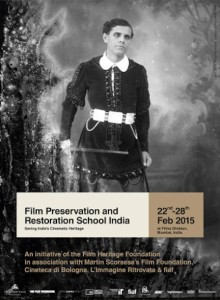 The shortcomings are not only technological, he believes. Film’s status in Indian culture remains mixed – although the medium is hugely popular, film is not generally viewed as an art form. With that comes the lack of a full embrace of the ethos of restoration, with its historical and cultural dimensions. Without those there can be no hope of doing justice to “the intent of the original creator, the artistic integrity, accuracy, and completeness” of films, he says.
The shortcomings are not only technological, he believes. Film’s status in Indian culture remains mixed – although the medium is hugely popular, film is not generally viewed as an art form. With that comes the lack of a full embrace of the ethos of restoration, with its historical and cultural dimensions. Without those there can be no hope of doing justice to “the intent of the original creator, the artistic integrity, accuracy, and completeness” of films, he says.
Singh has distinguished himself in various roles in honoring Indian film history. Celluloid Man, which he completed in 2013, is the award-winning film he made in an idiosyncratic, quasi-documentary style about PK Nair, the vaunted founder of the National Film Archive of India. In July 2014, Singh and colleagues organized a festival of Indian film for which they chose eight films that provided a sense of the output of the three major centers of Indian film in the years following independence in 1947: Bombay, Madras, and Calcutta, where the influence of Italian neo-realism was evident, particularly of Vittorio de Sica’s Bicycle Thieves.
Now, with their restoration school, he and his group will try to convey to 40 aspiring film-restoration specialists that their jobs involve an array of skills and considerations including research, physical repair, cleaning and various photochemical and digital techniques for repairing the image and creating good-as-new images.
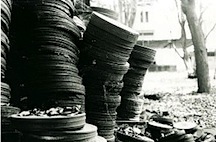 Instructors will presumably tell their charges that a future in the profession cannot be easy, in the Indian context. Speaking this month (November 2014) at Literati 2014, a major national literary conference, Shivendra Singh outlined just how fraught the physical condition of Indian film is. The statistics are stunning, beginning with the era of silent film: “India made 1,700 silent films, but only five remain now,” he reported. “Most were lost by the 1950s.” Archives hold only 12 to 15 film fragments from the era, in all.
Instructors will presumably tell their charges that a future in the profession cannot be easy, in the Indian context. Speaking this month (November 2014) at Literati 2014, a major national literary conference, Shivendra Singh outlined just how fraught the physical condition of Indian film is. The statistics are stunning, beginning with the era of silent film: “India made 1,700 silent films, but only five remain now,” he reported. “Most were lost by the 1950s.” Archives hold only 12 to 15 film fragments from the era, in all.
He had more bad news about “a lost heritage” of Indian film: for example, the silent-film industry in Madras made 124 films and 38 documentaries, but only one film, Marthanda Verma, from 1931, survives.
The situation is hardly better for films with sound: Of 250 films made in Madras between 1931 and 1941, only 15 remain. By 1950, India as a whole had lost 70 to 80 per cent of its films, including its first sound film, Alam Ara. (Here are PK Nair’s “Top 10 Lost Indian Films.)
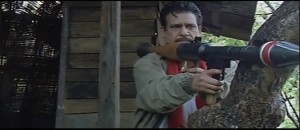
Nobody messes with Om Puri
And, he said, that neglect was not merely an issue of earlier technological limitations, because the same pattern persists. He cited a painful experience that last year befell the prominent film director Gulzar, who after he won a major film award last year, tried to organize a screening of his 1996 Bollywood action-thriller hit, Maachis, only to find that no print exists.
At Literati 2014, Akshay Manwani, author of a well-received 2014 biography of film songwriter Sahir Ludhianvi, bore Singh out by delivering a blunt assessment of caretaking of India’s vast film heritage: “The National Film Archives are in a complete mess,” Manwani reportedly said. “The staff is uncooperative and the culture of this is very apparent in all our interactions when work needs to be done.”
Shivendra Singh says the situation will not improve without a major revision in Indians’ view of their film heritage. The situation isn’t helped by the continual outpouring of new films that dominate industry attention. In 2013, India produced 1,724 films in 32 languages, 744 of them shot on celluloid. The other 980 were made in digital format, which presents its own archival challenges. At present, no digital archiving master format exists that has the longevity of film.
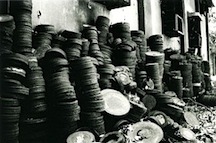 The mathematics of Indian film archiving are not impressive, given those numbers. The National Film Archive of India has existed for 51 of the Indian industry’s 101 years, and yet holds only 6,000 Indian films.
The mathematics of Indian film archiving are not impressive, given those numbers. The National Film Archive of India has existed for 51 of the Indian industry’s 101 years, and yet holds only 6,000 Indian films.
It won’t be soon that the Film Heritage Foundation will remedy that situation, nor the 40 students it plans to admit to its February course which, at one week in length, can hope to be only a start. But to make an attempt is the organization’s stated purpose, along with advocating film as an educational medium, and creating general awareness of the language of cinema.
The course, whose intended enrollment pool is not only India, but also Sri Lanka, Bhutan, and Nepal, will revolve around lectures, a series of modules on film restoration including hands-on training in the latest techniques, and screenings of the kinds of results restoration can attain. Conducting the workshops will be a technical team from leading film and film-restoration organizations.
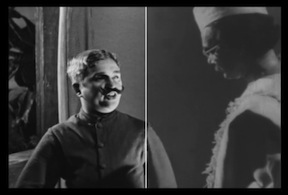 All that is attracting top-flight assistance from the film preservation world. Singh and his colleagues will have on hand some of the best advisers in film archiving. Some will come from Martin Scorsese’s nonprofit Film Foundation, whose mission is to preserve motion-picture history by providing financial support to leading film archives around the world, and that foundation’s World Cinema Project which preserves and restores neglected films in countries that lack adequate facilities of their own.
All that is attracting top-flight assistance from the film preservation world. Singh and his colleagues will have on hand some of the best advisers in film archiving. Some will come from Martin Scorsese’s nonprofit Film Foundation, whose mission is to preserve motion-picture history by providing financial support to leading film archives around the world, and that foundation’s World Cinema Project which preserves and restores neglected films in countries that lack adequate facilities of their own.
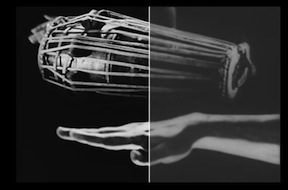 Also on hand will be experts from Fondazione Cineteca di Bologna, a center for various aspects of film archiving, conservation, and restoration including training, research, and publishing, and from its L’Immagine Ritrovata, a state-of-the-art film restoration laboratory. Also in attendance will be representatives from FIAF, the International Federation of Film Archives, which represents more than 150 institutions in 77 countries. The course also has the support of Films Division of India.
Also on hand will be experts from Fondazione Cineteca di Bologna, a center for various aspects of film archiving, conservation, and restoration including training, research, and publishing, and from its L’Immagine Ritrovata, a state-of-the-art film restoration laboratory. Also in attendance will be representatives from FIAF, the International Federation of Film Archives, which represents more than 150 institutions in 77 countries. The course also has the support of Films Division of India.
 The visitors from outside India will represent highly regarded organizations. The Film Foundation, Cineteca di Bologna, and L’Immagine Ritrovata recently restored the 1948 Indian classic Kalpana (“Imagination”), the only film made by Uday Shankar, a key figure in Indian classical dance and the brother of music icon Ravi Shankar. The results (left) are striking.
The visitors from outside India will represent highly regarded organizations. The Film Foundation, Cineteca di Bologna, and L’Immagine Ritrovata recently restored the 1948 Indian classic Kalpana (“Imagination”), the only film made by Uday Shankar, a key figure in Indian classical dance and the brother of music icon Ravi Shankar. The results (left) are striking.
As Martin Scorcese explains in an online introduction to the restoration, after Uday Shankar won high regard in Europe and the United States for his performances there, he returned to India to start a cultural center in the Himalayas. After it closed, he spent four years making an “hallucinatory” film, in which he and his wife starred, about a dancer who aspires to open a cultural center. The result was not just a film of great imagination, Scorsese says, but “it is also a genuine dance film” — “not just about dance, but that is dance in movement, composition, and energy.” An online four-minute clip shows the improvement that the restoration has brought to the footage.
A second restoration, of the Sri Lankan 1972 film Nidhanaya, by Lester James Peries, also was made. Both restored versions premiered at the Cannes and Venice Film Festivals this year.
 Shivendra Singh Dungarpur earned high praise for his contributions to that project from Martin Scorsese. And Scorsese, a longtime advocate of increasing efforts to preserve the world’s film heritage, shows his appreciation and support for the Mumbai project in a letter for potential supporters: “Thousands of films have been lost and many more will be lost if preservation is not taken up as a priority. … The school is an important step in the right direction.”
Shivendra Singh Dungarpur earned high praise for his contributions to that project from Martin Scorsese. And Scorsese, a longtime advocate of increasing efforts to preserve the world’s film heritage, shows his appreciation and support for the Mumbai project in a letter for potential supporters: “Thousands of films have been lost and many more will be lost if preservation is not taken up as a priority. … The school is an important step in the right direction.”
He added: “I whole-heartedly endorse the Film Preservation and Restoration School India as a commendable pioneering effort by the Film Heritage Foundation and appeal to all filmmakers and other industry stakeholders to come forward and support this initiative to save India’s cinematic heritage.”
The course will be something of a proof of concept. The organizers say that if they can demonstrate a capacity to train technicians in restoration and archival best practices, they will be encouraged to try to set up a film-restoration facility in Mumbai.
— Peter Monaghan
Application forms are available online from the participating organizations’ websites: Film Heritage Foundation, Film Foundation, Cineteca di Bologna, Immagine ritrovata, and FIAF. For information: Film Heritage Foundation, Mumbai, Mr. Jayant Patel.
Printed from Moving Image Archive News: https://www.movingimagearchivenews.org
URL to article: https://www.movingimagearchivenews.org/time-to-start-fixing-indias-tattered-film-heritage/
Click here to print